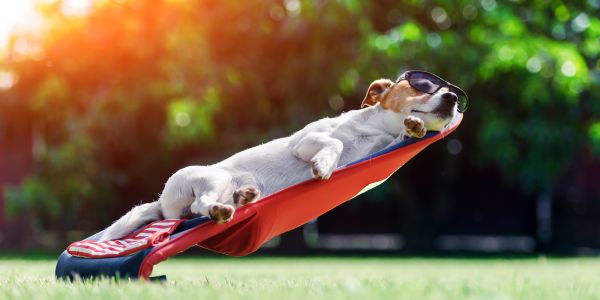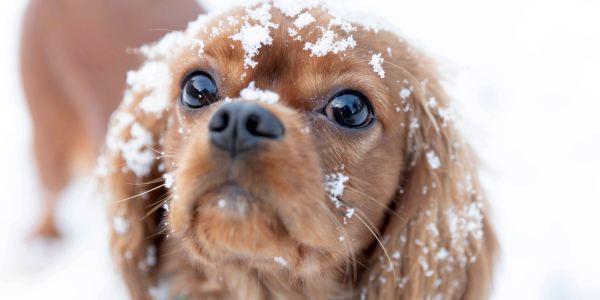Anxious dogs – what to do when your dog shows signs of anxiety?

06.12.2019
Fear - a body-own alarm system, which leads humans as well as dogs to show certain signs of anxiety. It puts us in a position to flee or to fight against the weathering danger. But we must not forget that fear is a natural reaction. It helps to escape in risky situations and can prevent injuries and accidents through precautionary measures.
In dogs, the alarm system is inherently different. There is always a reason for fear in dogs. For example, this can be due to bad experiences in the past, which can trigger the dog repeatedly.
Reasons for the fear
- Bad experiences: If the dog was beaten in the past, a harmless walking stick could already trigger fear.
- Genetics: genetic disposition can promote the development of anxiety.
- Lack of socialization: If the dog is not conditioned in the puppy phase and learns to know different behavior. Children, large animals and unusual noises can already deter him.
- Wrong behaviour of the owner: If you don't take your dog's fear seriously, you can increase it even further.
- Poor housing conditions
- Unfair animal handling
- Health impairments
- No or few social contacts
- Too be separated too early from its mother
- Lack of education
- Permanent stress
Recognising fear in dogs
You can tell that a dog is afraid by his body language. It is important to pay attention to your dog's signals so that you can protect him from stress. Physical symptoms are for example trembling, panting and scratching. But also, a stiff posture, a crouched head and ears and avoiding eye contact can show that your dog is afraid. He will try to distance himself and escape from the situation he finds himself in. However, also the exact opposite situation may occur: your dog may growl defensively and bite out of fear.
Dealing with the dog's fear
If your dog shows signs of fear, then it is advisable to deal with the history of your dog first. Have you had him as a puppy or from the shelter? Can you determine the causes for the fear behavior by its past? It must be clarified since when the fear exists and in which moments it occurs exactly, in order to be able to analyze it. This way you can avoid situations that would trigger your dog or prepare him carefully for it. It is important that you give your dog the opportunity to retreat. Especially during thunderstorms your dog is not exposed to the many stimuli and he can generally come to rest. It is recommended to simply avoid stress situations and not to force your dog to expose himself if he does not want to. You can only increase your dog's fear and not get him used to it when he fights back.
When dealing with your dog, it is important that you ignore the anxious behaviour of your dog at first. If you pet your dog, it may cause the opposite reaction. Stay with him but let him process the situation himself. If he exposes himself to a fear situation, you can reward him afterwards for having faced the situation. Try situations where your dog is and connect it with positive stimuli. Rewards can be especially helpful. But also, a regular everyday life and routine can help to minimize your dog's fear behavior. By the habit of events you provide security to your dog. If a basis is created, you can condition your dog much more easily to deal with stress situations.
If you are overwhelmed or don't have the right way to help your dog, or if your dog's behavior worsens, don't be afraid to get help. There are experts, dog trainers and animal psychologists especially for dogs that often show signs of anxiety. They can explicitly analyse your dog's behaviour and know exactly how to deal with your dog.
As you can see, to have a fearful dog is not necessarily bad, but quite natural. However, the fear of a dog can also increase steadily, and the owner can quickly be overwhelmed because he does not know how to deal with his dog. It is important to give the dog security, to build up routines and to avoid situations that stress and frighten the dog and/or to confront him slowly with the fear step by step. If no measures help, it is advisable to get help from experts so as not to increase the fear too much by taking the wrong measures of one's own.








